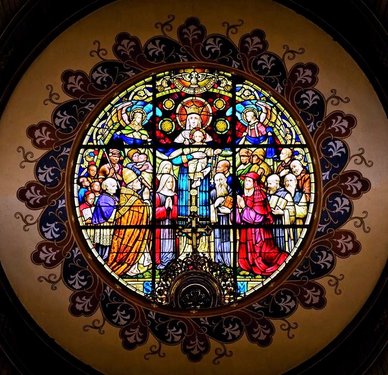
Abbot Pfanner Trappist Trail pilgrimages
Most pilgrimage trails lead to a shrine or Holy place and for this reason our walking pilgrimage will start at Reichenau Mission, the first outreach mission built by Abbot Pfanner and his monks from Mariannhill in 1886. Visiting 8 of the missions the pilgrimage will end at Mariannhill, where the Abbot’s story started and where he is buried. Some stages between the 8 missions are ±40 km.
This meant dividing some stages into two days. A hired bus and driver fetches pilgrims from predesignated places on the road and takes them to their overnight accommodation. The next day they return the pilgrims to the place where they were picked up so that they can continue walking. The vehicles also transfer their luggage from one overnight place to the next. Local walking guides accompany the groups on each stage.
- 8 nights and 9 days - ± 160km
- Groups visit 8 missions – Reichenau, Kevelaer, Centocow, Lourdes, Emaus, Maria Hilf (aka Mary Help), Mariathal, as well as St Isidor at Kings Grant, and Mariannhill. They stay at two missions – Centocow and Emaus - and also, if available, at Kings Grant. The July and October walks coincides with the Creighton Steam Train.
- Pilgrims are given a Pilgrim Record to have stamped at each Mission and at the end of the walk a special blessing is held at Mariannhill and certificates awarded..
- Besides a Mission or two, we stay in BnB establishments, lodges and country guest farms. Only a couple of single rooms are available.
- Meals - some offer dinner, bed and breakfast, others will cater for us. Daily provisions to make a light lunch will be provided (bread, butter, cheese, tomatoes, biscuits, peanut butter, jams, fruit)
- Some of the missions are two days walking apart and the group will be collected from a prearranged place and transferred back there the next day.
- Luggage will be transferred between overnight stops. Space is limited to one small tog bag per person and a day pack per person.
- When you return to Mariannhill you will be given the Abbot Pfanner Trappist Trail pilgrimage certificate.
About Abbot Francis Pfanner
Abbot Francis Pfanner, born Wendelin Pfanner on 20 September 1825 in Langen-Hub, near Bregenz (Austria), was ordained as a priest in Brixen, Austria in 1850. His health was not good and he suffered from tuberculosis during and after his studies. Father Pfanner journeyed to Rome, and made a pilgrimage to the Holy Land in 1863, before entering the austere Trappist Priory of Mariawald in Germany.
“I am doing this after long and careful consideration; my thinking is completely rational…I do not seek to become rich, I do not want any high office. I do not want to become famous in this world. I would rather be poor and live totally unknown in a remote monastery somewhere, hopefully for the rest of my life, if they have need of me…”

our popular tour
There are many variations of passages of Lorem Ipsum available, but the majority have suffered alteration in some form, by injected humour, or randomised words which don't look even slightly believable. If you are going to use a passage of Lorem
The point of using Lorem Ipsum is that it has a more-or-less normal distribution of letters, as opposed to using 'Content here, content here', making it look like readable English.
